Explore our wide variety of lesson plans that address topics such as Jewish women’s involvement in the Civil Rights and Labor movements, the developing role of women in Jewish ritual life, Jewish women’s contributions in fields from art to politics, and so much more! Our lesson plans are highly adaptable; we encourage all users to pick and choose the content that they want to use, and to integrate our lessons into their own curricula.
Browse Our Curricula
Filter Our Lesson Plans
How Does My Identity Inform My Actions?
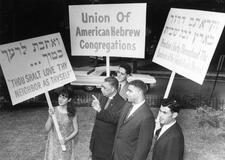
Consider how Jewish experiences and values – in both conscious and unconscious ways – informed the actions of Jews in the Civil Rights Movement, and inform our own allegiances and behaviors.
Lilith: Demoness or Heroine?

Learn about Lilith’s long and varied history, and consider how her story reflects changing perspectives on powerful women.
The American Jewess on Liberation and Freedom
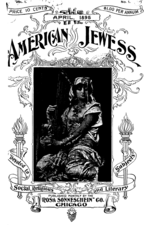
Investigate what it means for American Jews to celebrate Passover and the Fourth of July in the context of religious and national freedom, by reading an editorial from the April 1897 issue of The American Jewess.
The Immigrant Experience in NYC, 1880-1920 (Module #1)

Consider the economic and social forces that shaped Jewish immigrants' everyday lives and meet real-life workers and factory owners.
Our Heroes
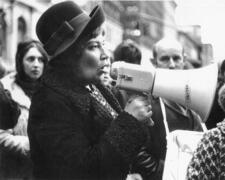
In this lesson, students have the opportunity to explore different definitions of the word “hero.” They discuss why (and if) heroes are important and do research about individuals they consider to be heroes. Lastly, students are asked to think about which of their own actions could be considered heroic and how they serve as role models for friends, peers, and family members.
Tali Puterman
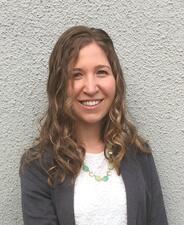
Originating from Cape Town, South Africa, Tali Puterman now lives in Boston and works as the Social Justice Educator and Community Organizer at Temple Israel of Boston. Tali received her MA in Educational Studies from Tufts University and her BA from Brandeis University. Reacting to her own experiences of miseducation growing up White in post-Apartheid South Africa attending an Orthodox Jewish day school, Tali challenges students to question and confront injustices and see themselves as Jewish leaders of change.
Queen Esther and Bella Abzug: Costumes, Leadership, and Identity

Discover how two remarkable Jewish women: The biblical figure, Esther, and the historical figure, Bella Abzug, both fought for justice and liberation by adopting personas that helped them achieve their goals.
Ramona Brand
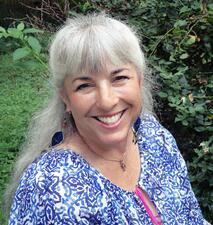
Ramona is Director of Education at Congregation Beth Ahabah in Richmond, VA. Her winning lesson plan, “Our World Through a Jewish Lens,” introduces students in grades 8–10 to photojournalist Ruth Gruber, whose work was influenced by her Jewish identity, and asks how they might express a Jewish point of view through photography.
Our World Through a Jewish Lens
Jews and African Americans: Siblings in Oppression?
Explore and interrogate the identification between Jews and African-Americans against the backdrop of the Passover seder.
Julie Rezmovic-Tonti, with Jessica Kirzane
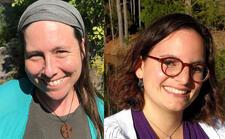
Julie Rezmovic-Tonti teaches middle school Jewish history and serves as Outreach Coordinator at Gesher Jewish Day School in Fairfax, Virginia. She has a BA in Women's Studies from the University of Maryland and an MA in Jewish Studies from Siegal College. She also studied at Yeshivat Simchat Shlomo and the Shalom Hartman Institute in Jerusalem. She lives in Fairfax, Virginia, with her husband, three children, typewriter, pottery wheel, and garden.
Jewish Radicalism and the Red Scare

Examine the rich tradition of Jewish radical politics and its repression in the McCarthy era, focusing on the history of Jewish radicalism in the entertainment industry and the Hollywood blacklists of the 1940s and 1950s.
Community Organizing II: Wednesdays in Mississippi
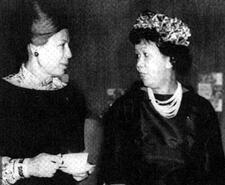
Encounter a little known story of women collaborating across geographic, racial, and religious boundaries through documentary clips of Wednesdays in Mississippi activists.
Audrey Abade
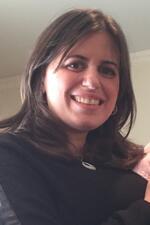
Audrey Abade is the Jewish History Department Chair at Magen David Yeshivah High School. Her research has focused on Sephardic Jewry, particularly the role of women within Syrian and Egyptian Jewish communities. Her study of Egyptian Jewish women and their immigration to the United States was published in, “A Jewish Feminine Mystique?: Jewish Women in Postwar America.” Her lesson focuses on Syrian Jewish Americans during World War II and looks at the process of identity formation through the lens of young first and second generation women.
Strikes and Unions (Module #2)
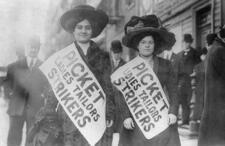
Explore the realities of working conditions in garment factories and the experiences of labor union members. Then uncover why and how both workers and factory owners organized to reach their goals.
Judith in the Enemy’s Tent
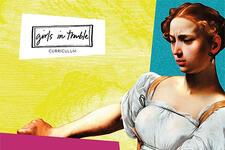
Learn about Judith’s bravery in the face of extreme danger, and consider how her story can inspire us to harness our own hidden power.
Tamar at the Crossroads
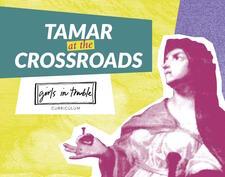
Learn about this fascinating story from Genesis, which is not often discussed. Explore how Tamar takes action to provide herself with what she needs, once she realizes that no one else is going to give it to her.
Benevolent Societies and Tzedakah
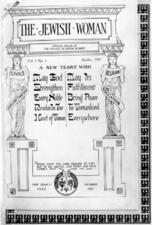
Examine different ways that American Jewish women historically—and we today—fulfill the obligation of tzedakah (charity) and gemilut chesed (acts of loving kindness).
Ruth's Journey
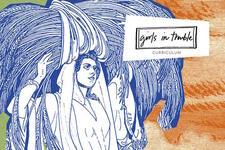
Learn how Ruth changed her life by making a series of bold choices, and examine how taking risks, small or large, might lead to positive transformations in your own life.
Lilith Evolved: Writing Midrash
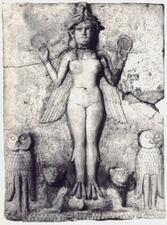
Interrogate the notion of midrash using "The Coming of Lilith" by theologian Judith Plaskow as an example of how contemporary Jewish feminists have created their own midrashim—retellings of biblical stories—to incorporate women's viewpoints into the traditional texts of Judaism.
Rachel and Leah: Being Sisters
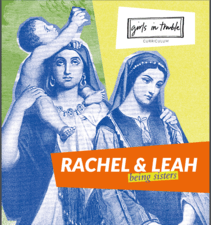
Consider Rachel and Leah’s intertwined story and complicated relationship as sisters, and reflect on both the positive and challenging aspects of sisterhood.
Rachael Cerrotti
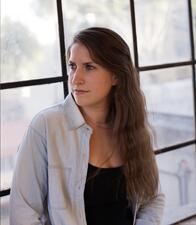
Rachael Cerrotti is a documentary photographer, writer and educator. Her storytelling focuses on narratives of resilience with a unique interest in family history. For nearly a decade, Rachael has been pursuing her long-term project, Follow My Footprints, retracing her grandmother's route of displacement during and in the wake of World War II. She is now writing a book about this journey and regularly speaks in communities and classrooms across the country and abroad.
Bread and Roses - Defining Basic Needs
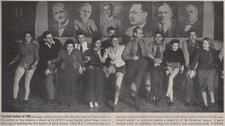
Explore the concept of “Bread and Roses” and ideas about work and dignity, with specific cases on education and culture, hats and clothing, poetry and song, as well as traditional Jewish texts about labor.
Sing a New Song: Jews, Music, and the Civil Rights Movement
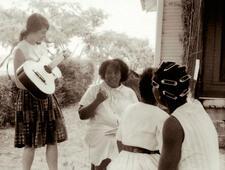
Using the letter of a Jewish civil rights activist and several freedom songs, explore how music is able to cross racial and religious boundaries and build community.
Taking Risks, Making Change: Bat Mitzvah and Other Evolving Traditions

The letters from one girl's campaign to have the first Saturday morning Bat Mitzvah in her congregation in 1974 serve as a case study for exploring how we confront controversial issues and make change in our communities.
Rabbi Michael Rothbaum

Michael is a rabbi and educator at Beth Chaim Congregation in Danville, CA. His lesson plan, “Selling Soap, Smashing Sexism, Seeing Ourselves” uses Torah and images of art and advertising to teach students about how women are viewed in the media, as well as to create their own artwork inspired by Jewish artist Barbara Kruger.
Selling Soap, Smashing Sexism, Seeing Ourselves
In this lesson, students explore the work of Jewish artist Barbara Kruger, and learn how to look critically at images of women in advertising.
Workers and Their Allies, Then and Now

Through the history of mutual aid societies, unions, and settlement houses, as well as contemporary organizations working for labor rights, consider the ways Jews have supported one another and also worked in solidarity with others to repair the world.
Sarah's Sacrifice

One of the most famous stories in Genesis is the Binding of Isaac by his father Abraham (the Akeidah, in Hebrew). Sarah, Isaac’s mother, is noticeably absent from the text. Here we consider Sarah’s perspective, and how this foundational event in the Jewish origin story might have affected her.
Museum of Family History
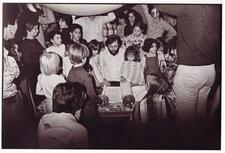
In this activity, students learn about a part of their own family history and have the opportunity to practice interviewing and writing skills. To showcase their learning, students curate their own museum of family history artifacts.
Ray Frank's Yom Kippur Sermon, 1890

Read the 1890 Yom Kippur sermon by Ray Frank, the first Jewish woman to preach formally from a pulpit, and consider what unites and divides the Jewish people both historically and today.
Civil Disobedience: Freedom Rides
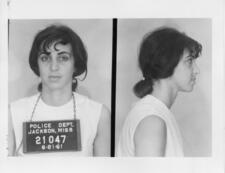
Discover the story of one young Jewish Freedom Rider and Gandhi's principles of civil disobedience, and prepare your own civil disobedience training video.
From Suffering to Action, From the Individual to the Collective
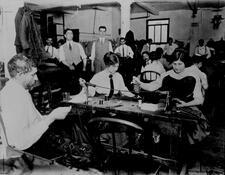
Examine inter-generational relationships among Jewish immigrants, and the role of work and workers’ youth culture in the Americanization process. Use art and writing to explore your own identity formation.
Imagining Our Future Selves

In this activity, students will explore the importance of the bat/bar mitzvah in the Jewish life cycle. They will examine events that are or will be important to them throughout their lives and will imagine their future selves in order to reflect on their beliefs and hopes for their lives.
Rabbi Reuven Travis
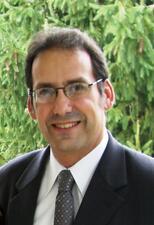
Reuven is a religious studies and American history teacher at a Modern Orthodox high school. His lesson plan uses primary sources as the basis for exploring Jewish experiences from two important tactics of the Civil Rights Movement: The Freedom Rides and Freedom Summer.
Civil Disobedience and the Freedom Rides
Explore Jewish involvement in the Civil Rights movement, and consider how we can use this knowledge to combat ongoing institutionalized racism with civil disobedience.
Moments of Personal Resistance
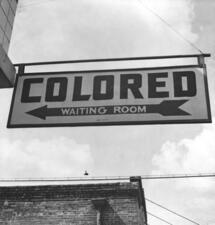
Examine how individuals take stands against racism and injustice using an essay by Grace Paley and three other short vignettes of individual protest.
Rabbi Deborah Bodin Cohen
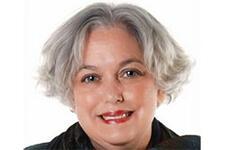
Deborah is Director of Congregational Learning at Congregation Har Shalom in Potomac, MD. Her winning lesson plan, “Confirmation: Joining the Legacy”, teaches students about the history of Confirmation.
Confirmation: Joining the Legacy
Through learning key aspects of the history of Confirmation, students will develop a sense of connection to past Confirmands, and thus see their Confirmation as connected to Jewish heritage.
De facto segregation in the North: Skipwith vs. NYC Board of Education
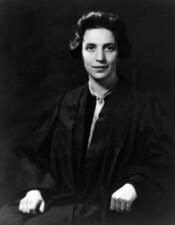
Investigate the dynamics of segregation in northern schools through a New York City court case ruled on by Judge and Jewish activist Justine Wise Polier.
Community Organizing I: Freedom Summer

Explore the role of community organizing, Jewish values, and moral conviction in the lives of young civil rights activists as you imagine yourself a participant in Mississippi Freedom Summer.
Judaism, Text Study, and Labor (Module #3)
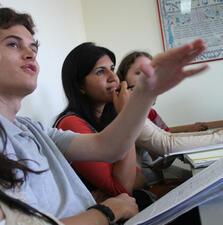
Study several traditional Jewish texts and apply the concepts in these texts to the stories and characters in the game. Think about the lessons Judaism teaches about the responsibilities of workers and employers.
Jewish clergy in the Civil Rights Movement
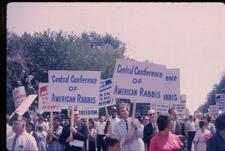
Unpack the roles, motivations, and challenges of Southern and Northern rabbis during the Civil Rights Movement.
Contemporary Labor Issues (Module #4)

Examine modern labor justice issues to allow students to consider their own stance on events like the 2013 collapse of a clothing factory in Bangladesh or the reports of poor working conditions in Chinese factories that produce iPhones and iPads.
Henrietta Szold on Saying Kaddish
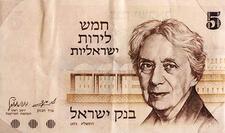
In a 1916 letter, Henrietta Szold (the founder of Hadassah) defied Jewish tradition and challenged rituals that exclude women by asserting her right to say Kaddish (the Jewish prayer for mourners).
Wrestling with God and Jewish Tradition
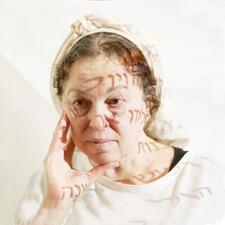
Learn about Jewish immigration and the development of the Jewish community in America through a 1790s letter, originally written in Yiddish by Rebecca Samuel to her parents in Hamburg, Germany, describing her life in Petersburg, Virginia.
Judith Sandman
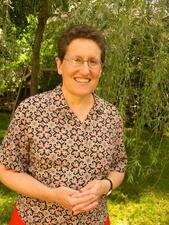
Judy is a middle school teacher at two synagogue schools. Her winning lesson plan called “What Will It Cost Me To Work For You?” connects Jewish stories from the Labor Movement to contemporary labor issues in Pakistan and Bangladesh.
What Will It Cost Me to Work for You?
Through learning about Judaism’s views on labor, as well as about Jewish women in the labor movement, students will explore realistic responses to unfair labor conditions in the US and overseas today.
Jews and Agricultural Labor
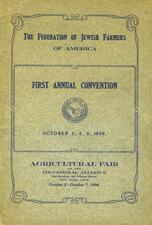
Discover the little-known history of American Jewish farming and explore the contemporary resurgent Jewish interest in food justice. Analyze traditional and modern texts about Jewish values and food production and consumption, and design your own vision for how society should produce, distribute, and consume food.
Contemporary Jewish Labor Campaigns: The Labor Movement Begins at Home
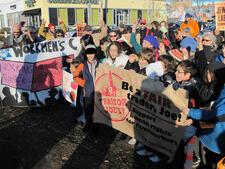
Explore contemporary Jewish labor campaigns on issues such as the living wage and the Domestic Workers’ Bill of Rights, and analyze how and why Jewish organizations are advocating in solidarity with oppressed workers.
Ariel Horn Levenson
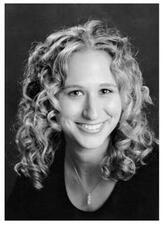
Ariel is a humanities teacher at a Modern Orthodox middle school. Her lesson plan introduces students to Jewish voices from Colonial America through a teacher role play and encourages students to hone critical analysis skills.
Jewish Life in Colonial and Post-Colonial America
Through primary source analysis, students examine the experience of being a Jew in colonial and post-colonial American history.
Identity, Independence, and Becoming American Jews
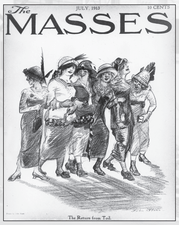
Examine inter-generational relationships among Jewish immigrants, and the role of work and workers’ youth culture in the Americanization process. Use art and writing to explore your own identity formation.
Jews and the Civil Rights Movement: the Whys and Why Nots
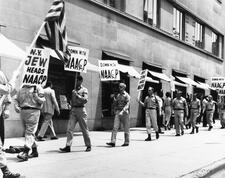
Assume the roles of Southern Jews participating in a Temple board meeting on whether or not to support Northern Jewish activists staging a protest in town.
Jewish Values in Action
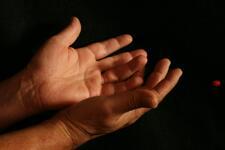
In this activity, students will explore their personal values and develop a deeper understanding of how values inform their identities and actions. This activity makes a great compliment to a service learning project, or an introduction to tikkun olam and other actions that are informed by Jewish values.
Miriam in the Desert
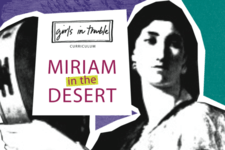
Consider Miriam’s experience of exile and investigate the parallels between her story and moments of alienation and isolation in your own life.


